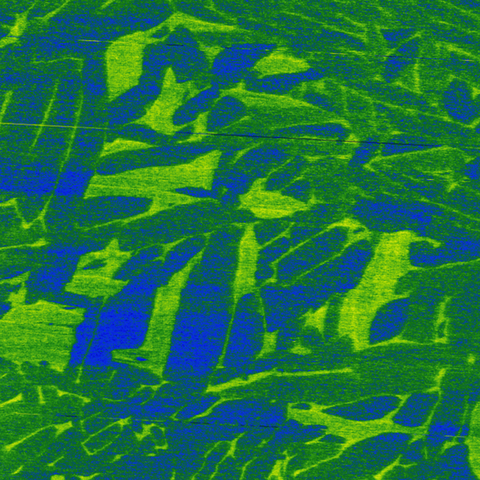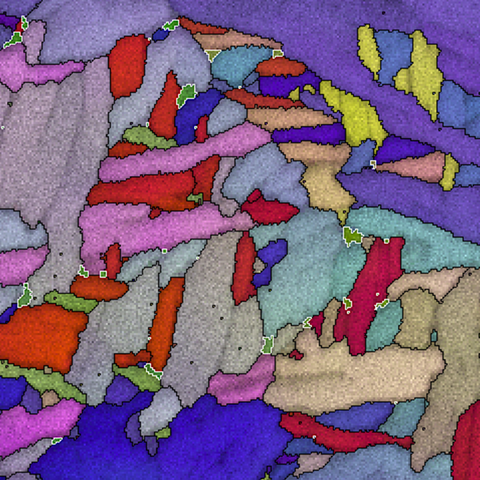

Putting the metalloid to the metal, researchers at Boise State University developed a new way to explore how a 3D-printed titanium alloy corrodes, and then sought NIST expertise in mapping out a material’s microstructure to get the full picture of the process.
With atomic force microscopy, researchers typically press a nanoscale silicon point with an optomechanical sensor against a material in order to map out its surface and understand its mechanical properties (dampness, stiffness, surface roughness, etc.). In this case, the BSU team swapped out the coated silicon tip for an uncoated silicon tip.
Having those metalloid-to-metal interactions meant that the BSU researchers could measure differences in work function, or the minimum energy needed to rip an electron from its titanium sample. Ultimately, removal of electrons from the one source equals a gradual corrosion of the material (called galvanic corrosion).
But is it possible to adjust a 3D-printing process and reduce the risk of corrosion?
For that answer, the BSU researchers turned to our very own Jake Benzing, a postdoctoral researcher at NIST who specializes in the study of additively manufactured materials at the microscale. Firing an electron beam into the surface of the 3D-printed titanium, Jake explored the specific pattern of the individual metallic grains inside and created colorful mappings that illustrate how each would respond to an applied force.
Comparing the maps from Jake with the BSU images, the researchers found that the atom-thick sheets of metal (which together combine into a 3D-printed object) stood up better to potential corrosion when more grains were squeezed onto the same plane.
Making even the slightest changes to the 3D-printing process can determine the way metallic grains are oriented in the ultimate product. That means you can intentionally adjust your manufacturing methods to incorporate layers with either more or fewer grains of a specific orientation, depending on whether you want the piece to corrode quicker or slower. It could be useful in biomedicine, where manufacturers could design implants that disintegrate in some areas on purpose, while others remain for longer-term support.
Get the details in the study, published in AIP Advances.
Follow us on social media for more like this from all across NIST!

